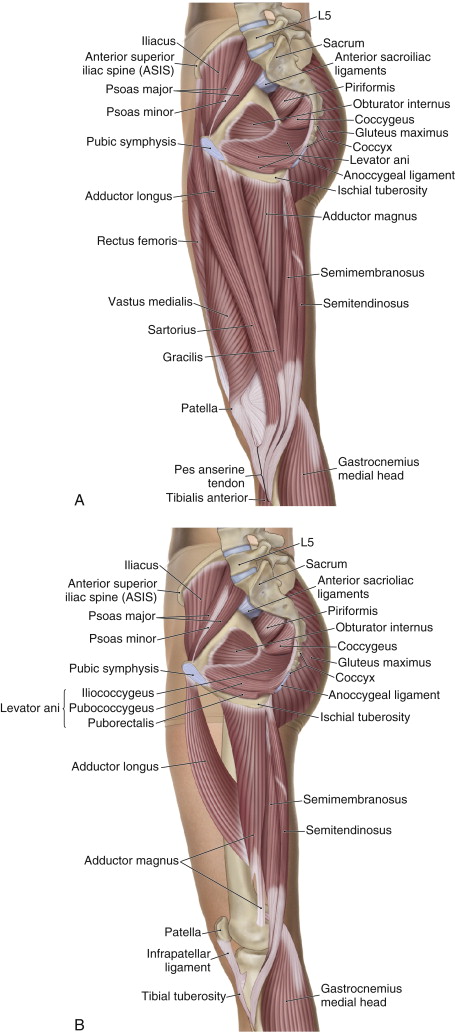Signs and symptoms:

Medial views of the adductor group. Permission: Joseph E. Muscolino. The Muscle and Bone Palpation Manual, 2ed (2016), Elsevier.
The most common symptom of an adductor strain is pain in the medial thigh at the site of the strain. Pain is usually sharp when the injury is acute, and transitions to being more dull in quality when the condition is chronic. Pain increases if the area is palpated. Most often the strain occurs proximally near the attachment on the pubic bone, however it can occur farther distally in the musculature. If the strain is acute, swelling will also be present. Depending upon the severity, ecchymosis (black and blue) may also be visible due to the pooled blood under the skin. Because there is tearing of muscle tissue, contracting adductor musculature in an attempt to adduct the thigh, especially against resistance, will likely result in pain. Stretching the adductor musculature by moving the thigh into abduction will also likely result in pain.
Once the acute stage is passed, swelling and ecchymosis will no longer be present. Depending on how well the tissue healed, pain might or might no be present. But it is likely that global tightness of adductor musculature and/or myofascial trigger points will remain. This will usually result in decreased abduction range of motion of the thigh, and perhaps decreased thigh extension range of motion as well (or flexion range of motion if the adductor magnus is involved). If the original strain was severe enough, the client/patient might have a defect in the muscle where the strain occurred that feels like an indentation. Adjacent to this indentation, there will often be a palpable lump created by the disrupted fibers that have bunched up as well as scar tissue (“fuzz” in the parlance of educator Gil Hedley) that has built up.
If adductor musculature is tight enough, it can affect the postural balance of the thigh and/or pelvis. The effect of tight adductor musculature pulling on the thigh is thigh adduction, possibly resulting in genu valgus (knock knees). The effect of tight adductor musculature pulling upon the pelvis is elevation of the pelvis ipsilaterally (on that side of the body), and therefore, a dropped pelvis contralaterally (on the other side of the body).


